| Download Information Brochure |
AIR & MISSILE DEFENCE INDIA 2023 SEMINAR & EXHIBITION
BRIEF
An International Seminar on "Air & Missile Defence India" is being organized on 16 June 2023 as a physical in-person seminar & exhibition at the Air Force Auditorium jointly with Indian Military Review. Ernst & Young are the Knowledge Partners.
The event is free to attend for all serving officers of the armed forces, paramilitary officers and DRDO scientists.
Objectives
The objectives of the seminar are to provide a forum to:
(a) Serving armed forces officers and DRDO scientists to discuss emerging threats and the technologies to counter and neutralise them.
(b) Formulate strategies and explore the road to upgrade, optimise current air defence assets.
(c) Interacting with industry and for understanding of the requirement of Air Defence and provide them an opportunity to industry to showcase their capabilities.
New and Emerging Aerial Threats
The modern battlefield is constantly evolving, and new aerial threats are emerging as technology advances. Some of the new aerial threats that have emerged or are emerging on the modern battlefield include unmanned aerial vehicles (UAVs) (including autonomous loitering munitions), hypersonic weapons, stealth aircraft, directed energy weapons (DEW) combined with cyber attacks on air defence systems, electronic warfare and use of space-based weapons, such as satellites and missile.
Growing Threats from Adversaries
The threat from the Chinese air force has evolved significantly in the last 4-5 decades. Overall, the Chinese air force has become a much more capable and modern force since the 1980s, with a more extensive range of aircraft, weapons, and systems and greater capabilities in network-centric, electronic warfare and space-based assets.
Significant modernization of their air force and missile force, introduction of stealth technology, advanced avionics and advanced engines, increase in the number and types of aircraft, their ranges and training, has led to improved proficiency and readiness and the ability to project power across the region.
Combined with network-centric capabilities, such as advanced communications and data-links, cyber and electronic warfare capabilities, and development of space-based assets such as satellites has given them additional advantages.
Countering and Neutralising Ballistic Missiles
Countering and neutralizing ballistic missiles can be a challenging task due to a number of factors, including their speed and altitude, manoeuvrability, longer ranges, multiple warheads, use of decoys and countermeasures, combined with space-based assets, such as satellites, cyber attacks and electronic warfare to disrupt or disable missile defence systems. The cost of developing, maintaining, and operating missile defence systems can be expensive and can be a significant burden on national budgets.
Essentials of an Effective Air Defence System
An effective air defence system should have the following essentials:
- Early warning and detection capabilities to identify and track incoming threats
- Communications systems to relay information and coordinate responses
- Weapons systems to engage and neutralize threats, such as interceptors and surface-to-air missiles
- Command and control systems to manage the overall defence and make decisions on the use of weapons
- Integration with other elements of the military and civil defence infrastructure, such as ground-based radar and ground-based observers
- Maintenance and readiness of all systems to ensure they are in good working order and can be quickly activated if needed.
Trends in Air-delivered Weapons
Air forces today have a wide variety of aerial delivery weapons that can be used for a range of different missions and scenarios. Some of the latest types of aerial delivery weapons include precision-guided munitions (PGMs), smart bombs, cluster bombs, glide bombs, stand-off missiles, cruise missiles and autonomous UAVs.
Trends in Air Defence Radars
There have been substantial improvements in the capabilities of radars, which form an important and essential part of the air defence equipment inventory. These improvements include longer ranges of detection, multi-mode operation (search, track, and fire-control), simultaneous multi-target tracking, low-observable target detection, built-in electronic counter-countermeasures and network-centric operation with other systems. The newest radars have the ability to produce high-resolution 3D images of the airspace, providing more accurate and detailed information about the location and movement of airborne targets. Artificial intelligence and machine learning has helped in improving their performance and adapt to new and emerging threats.
Ground-based Air Defence Weapon Systems
Ground ground-based air defence weapon systems are typically designed to engage aircraft, missiles, and other airborne threats at lower altitudes and shorter ranges than air force weapons. They often include surface-to-air missiles (SAMs), anti-aircraft artillery, and short-range air defence systems (SHORAD). They are also equipped with radar systems for early warning and target acquisition.
Air force weapons, on the other hand, are typically designed to engage and destroy enemy aircraft at higher altitudes and longer ranges. They include fighter aircraft, bombers, and air-to-air and air-to-ground missiles. They are intended to gain air superiority and to attack enemy air bases and other strategic targets. They are also equipped with radar systems for early warning and target acquisition.
In modern warfare, ground-based air defence weapons are closely integrated with air force weapons and other air defence systems such as radar and command and control systems, to create a layered defence and increase the overall effectiveness of the air defence system.
Traditionally, the air force is responsible for the defence of a country's airspace and for conducting offensive operations against enemy aircraft and other airborne threats. As a result, the air force often has a strong focus on air defence operations and may have the necessary skills, training, and experience to effectively command and control air defence assets.
Challenges to be Overcome
Ensuring an effective air defence system can be challenging due to a variety of factors, including technological advancements, limited resources, complexity of components and subsystems, the geographical location and terrain of the country, integration with other military and civilian systems, infrastructure for defence against cyber and electronic warfare, interoperability and training.
Seminar Sessions
The following sessions are planned:
(a) Session 1 - Inaugural
(b) Session 2 - Emerging Technologies and Industry Capabilities
(c) Session 3 - Emerging Threats, Surveillance and Detection
(d) Session 4 - Air Defence Countermeasures
(e) Session 5 – Research, Upgrades and Optimisation
0830-0930 hrs Arrival and registration
SESSION 1 – INAUGURAL SESSION (0900 – 1005 hrs)
0930 hrs Welcome Address. Air Mshl Anil Chopra, PVSM, AVSM, VM, VSM, Retd, DG CAPS
0945 hrs Inaugural Address. Air Marshal Surat Singh, AVSM, VM, VSM, DG Ops Air, Air HQ.
1000 hrs Special Address. Dr Ranjana N, Director DSTA, DRDO HQ.
1015 hrs Industry Perspective. Col KV Kuber, Director Defence & Aerospace, Ernst & Young.
1015 hrs Release of Report. EY-IMR Knowledge Paper on Air Defence.
1020 – 1050 hrs Refreshment break.
SESSION 2 – EMERGING TECHNOLOGIES AND INDUSTRY CAPABILITIES (1050–1215 hrs)
Chairperson: AVM Tarun Chaudhry, VSM, Asst Chief of Air Staff Ops (Projects), Air HQ.
1050 – 1105 hrs Introduction of speakers and Opening Remarks by the Chairman.
1105 – 1120 hrs Lessons in AD from the Russia-Ukraine War, Gp Capt Prashant Arora, Air HQ.
1120 – 1135 hrs Emerging Air Threat: Challenges to GBADWS from recent conficts. Brig Manish Kumar, VSM, Brig AAD, Army HQ.
1135 – 1150 hrs New developments in radars for detection, tracking threats and targeting. Sh Vasudev R, Scientist F, LRDE, DRDO.
1150 – 1200 hrs Industry presentation.
1200 – 1215 hrs Q&A session
SESSION 3 – EMERGING THREATS, SURVEILLANCE AND DETECTION (1215 – 1330 hrs)
Chairperson: Air Vice Mshl Anil Golani, Retd, Addl DG Centre for Air Power Studies
1215 – 1230 hrs Introduction of speakers and Opening Remarks by the Chairman.
1230 – 1245 hrs Challenges posed by Ballistic and Hypersonic missiles and Stand-off weapons. Air Cmde SM Paranjpe, VM
1245 – 1300 hrs OTH Radar for Peninsular & Chinese Front. A Perspective. Sh Nandakumar S, Scientist F, LRDE, DRDO.
1300 – 1330 hrs Q&A session
1330 – 1415 hrs Lunch.
SESSION 4 – AIR DEFENCE COUNTERMEASURES (1415 – 1600 hrs)
Chairperson: AVM PV Shivanand, VM, Asst Chief of Air Staff (Air Defence), Air HQ
1415 – 1430 hrs Introduction of speakers and Opening Remarks by the Chairman.
1430 – 1445 hrs Countering stealthy aerial threats. Gp Capt Suresh Kumar, Air HQ.
1445 – 1500 hrs AD Countermeasures: Naval Perspective. Cdr Viraat Shiggaon, Cdr SR, NHQ.
1500 – 1515 hrs Countering Unmanned Aerial Threats-Future Roadmap. Brig OP Vaishnav, AAD Dte.
1515 – 1530 hrs Countering the threat from ballistic and hypersonic missiles and stand-off weapons. Sh Amit Kumar, Scientist F, PGAD, DRDO.
1530 – 1600 hrs Panel discussion
CLOSING SESSION (1600 – 1625 hrs)
1600 – 1610 hrs Closing Remarks. Air Mshl Anil Chopra, PVSM, AVSM, VM, VSM, Director General, Centre for Air Power Studies.
1610 – 1615 hrs Vote of Thanks. Maj Gen Ravi Arora, Chief Editor, Indian Military Review.
1615 hrs onwards Refreshments and dispersal.
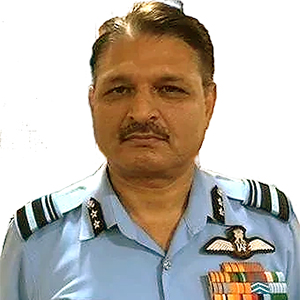

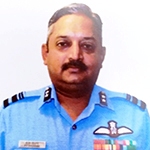



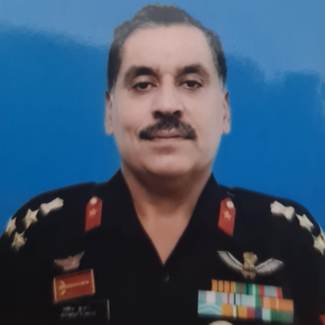
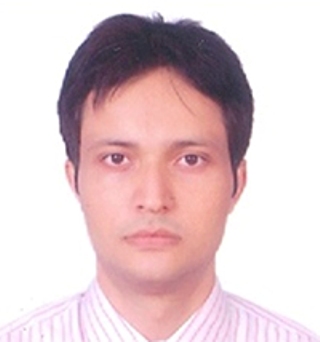
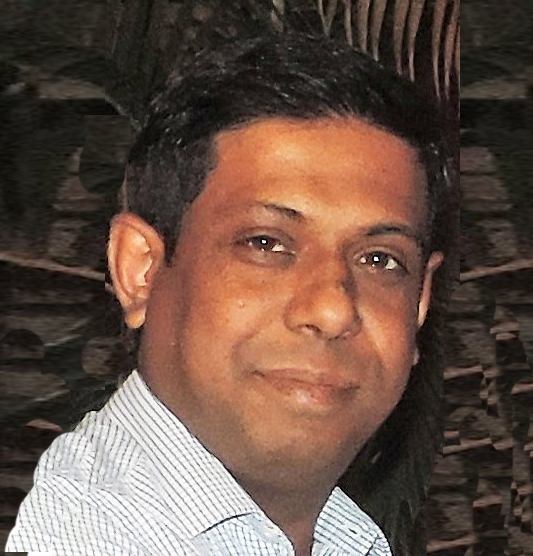

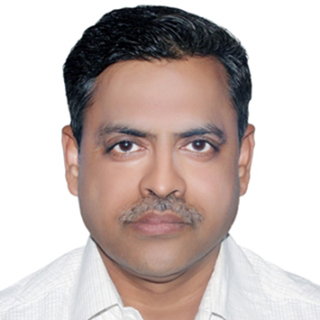
For Registered Users and Valid Pass Holders
Log-in with username "guest@mail.com" and password "guest"
If not already registered, buy a pass now from the options below.
